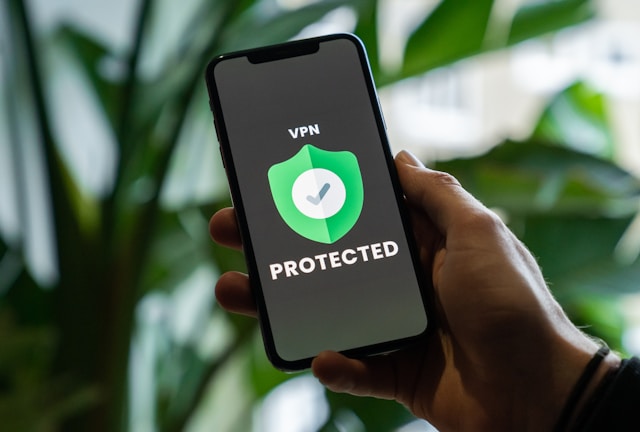Can you direct a delivery truck to a customer’s doorstep without it getting lost? You can do this with geocoding software! It’s like having a GPS genie that turns addresses into precise coordinates.
The world runs on data, and geocoding software is the backbone of businesses that rely on location data to thrive.
It helps businesses deliver location-based services, tailor content, and enhance user experiences. Whether for logistics, marketing, or compliance, accurate geolocation is a need of the hour.
This article will explain what geocoding software is, explore open source options, and list the best geocoders on the market.
However, to understand geocoding software, you first need to know the concept of geocoding. Let’s start with understanding what geocoding is!

Table of Contents
What Is Geocoding?
Geocoding is a process through which a computer converts a physical or street address into geographical coordinates. These coordinates include longitude and latitude, which businesses use for various mapping applications.
Geographic Information System (GIS) and Global Positioning System (GPS) play crucial roles in geocoding. GIS stores analyze, and visualize geographic data, while GPS provides precise location information using satellite signals.
There are two main types of geocoding: single geocoding and batch geocoding.
Single geocoding converts one address at a time, which is ideal for individual location searches. Batch geocoding processes multiple addresses simultaneously, which saves time for businesses needing large-scale data conversion.
But do you know there is also reverse geocoding? Reverse geocoding, as the name suggests, works opposite to geocoding. It converts geographical coordinates back into a readable address.
Geocoding and reverse geocoding help enhance various applications, from mapping services to location-based marketing and logistics planning.

What Is Geocoding Software?
You can’t just feed a physical address into a computer and expect it to respond with geographical coordinates. That’s why you need geocoding software, or a geocoder, as technical folks call it.
Geocoding software is a computer program that helps convert a geographic location into longitudes and latitudes. In other words, it lets you pinpoint a particular location on a map.
This software is essential for businesses and applications that rely on accurate location data. These businesses may include delivery services like Uber Eats, mapping services like Google Maps, advertising agencies, and urban planning companies.
Geocoding software uses algorithms and vast geolocation databases to ensure precise and reliable results. These databases include address information, geographical data, and map coordinates, which developers continuously update to maintain accuracy.
Now, you might wonder how geocoding software solutions generate results. Here’s how geocoding software works:
- Input address: You input the physical or street address into the geocode software.
- Parsing: The software breaks down the address into its components, such as street name, city, state, and postal code.
- Database lookup: It searches its database to find a match for the address.
- Coordinate conversion: Once a match is found, the software converts the address into geographical coordinates (longitude and latitude).
- Output: The software provides the coordinates you can use for mapping or other location-based applications.
Now we understand how it works, but is geocoding software free, or do you need to pay for it? Let’s understand this next.

Is Geocoding Software Free?
There are both free and paid geocoding services available on the market. Some software are completely free, while others offer both free and paid plans.
The basic difference between free and paid geocoding software includes:
- Single vs. batch geocoding: Free versions may only allow single geocoding, while paid versions often support batch geocoding.
- Lookup limits: The free version usually provides limited lookups, while paid geocoding API offers higher or unlimited lookups.
- Data accuracy: Paid versions may offer more accurate and frequently updated data compared to free versions.
- Advanced features: Paid geocoding software often includes advanced features such as reverse geocoding, additional data layers, and integration capabilities.
- Support and maintenance: Paid versions typically offer better customer support and regular maintenance updates.
Here is a table that shows some of the best geocoding software (free and paid):
| Free Geocoding Software | Paid Geocoding Software |
| Google Maps | Mapbox |
| QGIS | Esri Geocoding |
| Position Stack | HERE Geocoding |
| geoPlugin | geoPlugin |
Free options like Google Maps, QGIS, and Position Stack provide basic geocoding functionalities.
Paid options like Mapbox, Esri Geocoding, and HERE Geocoding offer more advanced features, higher lookup limits, and better support. These features make them suitable for businesses with more demanding geocoding needs.
geoPlugin is an exception here because it offers all features, basic and advanced, for free. However, its free plan has a lookup limit of up to 120 lookups per minute. You will need its premium plan if your business needs more than 120 lookups per minute.

Best Open Source Geocoding Software
Open source software has source code that anyone can inspect, modify, and enhance. This approach fosters collaboration and sharing among developers and users, leading to continuous improvements and innovations.
Open source geocoding software refers to geocoding tools developed under open-source principles. These tools allow you to:
- Access and modify the source code
- Customize it to your needs
- Contribute to its development
While many believe open-source software is always free, this is a misconception. Open source does not necessarily mean free.
Some open-source geocoding software may come with costs for certain features or support services.
Here are some notable open-source geocoding software options:
| Open Source Geocoders | Description |
Pelias | A search engine for places worldwide, powered by open data. It converts addresses and place names into geographic coordinates and vice versa. |
Geocode Earth | Provides fast, flexible, and easy ways to add geographic search features to your website or mobile app. Powered by open data, it allows you to store search results and enrich your database permanently. |
QGIS | It is an open-source GIS that provides powerful geocoding capabilities along with a wide range of GIS functions. |
Nominatim | Uses OpenStreetMap data to find locations by name and address. It supports geocoding and reverse geocoding and is scalable to meet your needs, from local to global data. |
OSM Names | Uses OpenStreetMap data to provide place names, including landmarks, cities, and postal codes. It’s suitable for place searches but may not support full address geocoding. It is available as an API and for self-installation. |

geoPlugin, the Best Geocoding Software Solution!
Your business needs geolocation data to thrive in today’s competitive business world. Accurate user location helps you tailor content and services to meet your audience’s needs.
geoPlugin offers an excellent solution with its advanced IP geolocation API and reverse IP geocoding software technology.
It provides an easy way to geolocate your visitors with an unmatched level of accuracy, which enables you to:
- Redirect them to language-specific pages
- Display product prices in local currencies
- Ensure compliance with regional privacy rules like GDPR
Since 2006, geoPlugin has offered stable, reliable, and fast IP geolocation services to thousands of clients worldwide.
Sign up today to enhance your business with geoPlugin’s top-tier geocoding solution!













